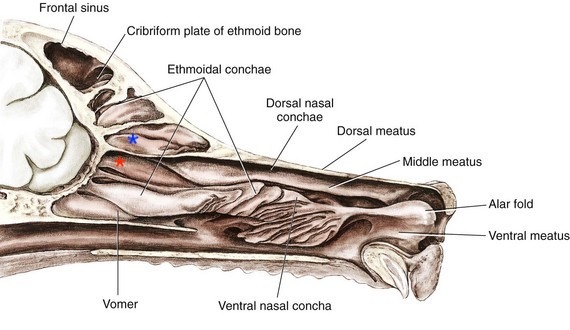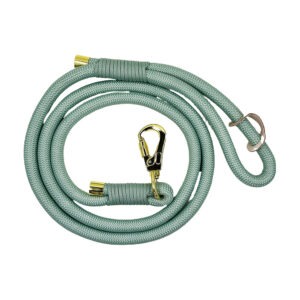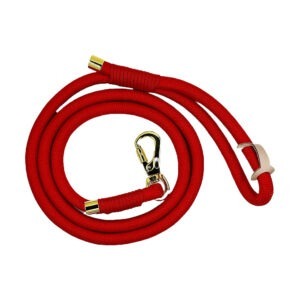Understanding Why a Dog’s Sense of Smell is So Important
Dogs are known for their loyalty, playful nature, and exceptional sense of smell. This incredible olfactory ability is more than just a quirky trait; it plays a vital role in their daily lives and interactions with the world. In this article, we will delve into the fascinating world of canine scent detection, exploring how dogs use their noses to navigate their environment, assist humans, and even detect diseases.
1. Anatomy of a Dog’s Nose
A dog’s nose is a marvel of biological engineering. Dogs possess between 225 and 300 million olfactory receptors in their noses, compared to a mere 5-6 million in humans. This vast number of receptors allows them to detect even the faintest scents. Furthermore, the olfactory cortex in a dog’s brain is proportionally 40 times larger than that in humans, emphasizing the importance of smell in their perception of the world.
Some of our latest products...
The structure of a dog’s nose is designed for maximum efficiency in capturing scents. When a dog sniffs, air is drawn into their nostrils, which are specially shaped with side slits to ensure continuous airflow. This design creates a sort of olfactory vortex that traps odor molecules, allowing the dog to analyze a steady stream of scents even while exhaling.
2. How Dogs Perceive the World Through Smell
Dogs perceive the world primarily through their sense of smell, which is far more acute than their sense of vision. Unlike humans, who rely heavily on sight, dogs use their noses to gather information about their environment. The vomeronasal organ, located above the roof of a dog’s mouth, plays a crucial role in detecting pheromones and other chemical signals, which can convey information about another animal’s identity, reproductive status, and even emotional state.
This ability to detect and interpret complex scent signals allows dogs to create a detailed map of their surroundings. They can identify and remember a multitude of smells, using them to navigate and understand their environment. For instance, when a dog sniffs another dog or a human, it is gathering data about that individual’s health, mood, and recent activities.
3. Practical Uses of a Dog’s Sense of Smell
The extraordinary olfactory capabilities of dogs have been harnessed for various practical applications. One of the most well-known uses is in search and rescue operations, where dogs can track missing persons or detect survivors trapped under rubble. Their ability to pick up faint human scents over long distances and through complex environments makes them invaluable in such missions.
Dogs are also trained to detect specific substances, such as explosives, drugs, and other contraband. Their noses can identify minute quantities of these substances, even when they are hidden or masked by other odors. This makes dogs indispensable in security and law enforcement roles.
Another remarkable application of a dog’s sense of smell is in the medical field. Dogs have been trained to detect certain diseases, such as cancer and diabetes, by identifying unique odor signatures in human bodily fluids. They can also alert their owners to impending medical crises, such as epileptic seizures or hypoglycemic episodes, providing crucial early warnings that can save lives.
4. Why Dogs Sniff Constantly
Constant sniffing is a natural behavior for dogs, driven by their need to gather information about their environment. When a dog sniffs, it is collecting data on other animals, people, and objects that have recently passed through the area. This behavior is essential for their social interactions and safety.
Through sniffing, dogs can determine whether another animal is friend or foe, identify potential threats, and recognize familiar individuals. They also use their sense of smell to locate food, track prey, and navigate their territory. For dogs, sniffing is as vital as seeing is for humans.
5. Enhancing Your Dog’s Smelling Experience
Engaging a dog’s sense of smell can be highly beneficial for their mental and physical well-being. Interactive scent-based games and activities are excellent ways to stimulate a dog’s olfactory senses. For example, playing hide and seek with treats or toys can provide both entertainment and exercise. Laying out scent trails for your dog to follow can also be a fun and rewarding challenge.
During walks, it’s important to allow your dog plenty of time to sniff and explore their surroundings. This not only enriches their experience but also helps to keep them mentally stimulated and satisfied. By understanding and appreciating your dog’s need to sniff, you can enhance their overall happiness and well-being.
6. The Future of Olfactory Research
Ongoing research into canine olfactory abilities continues to reveal new and exciting possibilities. Scientists are exploring ways to further enhance dogs’ natural scent-detection skills through breeding and advanced training techniques. These advancements could lead to even greater contributions from dogs in fields such as healthcare, security, and environmental conservation.
In addition to improving training methods, researchers are also investigating the potential for integrating canine olfactory abilities with technology. This could involve developing devices that mimic or enhance dogs’ scent-detection capabilities, leading to new tools for detecting diseases, pollutants, and other substances.
The Risks of Perfume for Dogs
Recently, there has been a trend of luxury brands, such as Dolce & Gabbana, creating perfumes specifically for dogs. While this might seem like a fun way to pamper our pets, it poses significant risks to their health and well-being. A dog’s sense of smell is incredibly sensitive, and exposure to strong scents can be overwhelming or even harmful.
Perfumes contain a variety of chemicals and essential oils that, while safe for humans, can be irritating or toxic to dogs. These substances can cause respiratory issues, skin irritations, and allergic reactions. Moreover, masking a dog’s natural scent can interfere with their ability to communicate with other animals and understand their environment.
Using perfumes on dogs undermines their natural olfactory capabilities, which they rely on for survival and interaction. Instead of enhancing their well-being, such products can cause distress and health problems. It’s essential to prioritize a dog’s health and respect their natural abilities by avoiding unnecessary and potentially harmful products like perfumes.
Fazit
The power of a dog’s sense of smell is truly remarkable, playing a critical role in their daily lives and their interactions with the world around them. From navigating their environment to assisting humans in various fields, dogs’ olfactory abilities are both fascinating and invaluable. By understanding and respecting these abilities, we can ensure that our canine companions lead happy, healthy, and fulfilled lives.
Häufig gestellte Fragen
Why is a dog’s sense of smell so much stronger than a human’s?
Dogs have up to 300 million olfactory receptors compared to humans’ 5-6 million, and a larger olfactory cortex in their brain, making their sense of smell far more powerful.
Can all dogs detect diseases?
While not all dogs have been trained to detect diseases, certain breeds with strong olfactory abilities can be trained to identify specific medical conditions, such as cancer or diabetes.
How can I stimulate my dog’s sense of smell?
Engaging in scent-based games, such as hide and seek with treats or laying scent trails, can help stimulate your dog’s olfactory senses and provide mental and physical exercise.
Are there any risks associated with using perfume on dogs?
Yes, perfumes can contain chemicals and essential oils that are harmful to dogs, causing respiratory issues, skin irritations, and allergic reactions. It’s best to avoid using such products on pets.
What are some practical uses of a dog’s sense of smell?
Dogs are used in search and rescue, substance detection (like explosives and drugs), and medical detection (identifying diseases and predicting medical crises).








